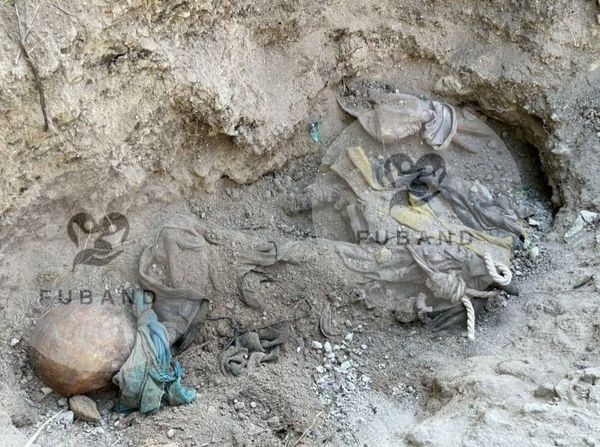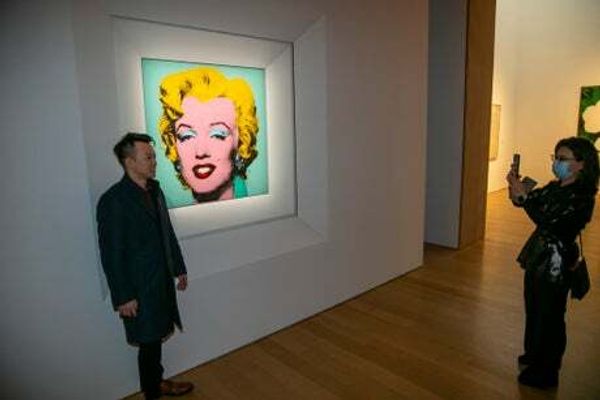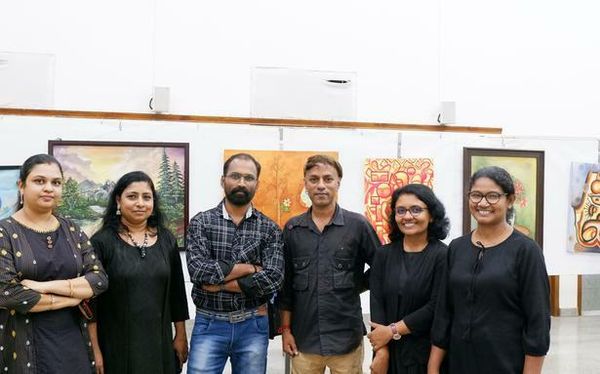
Argentinian artist Ad Minoliti’s work draws on the legacy of geometric abstraction – art made using forms and shapes, often with bold colours – as “a tool to question patriarchal structures”. Among their influences, Minoliti, who is non-binary and uses they/them pronouns, cites two rival groups of artists in Argentina, the Grupo Madí and Asociación Arte Concreto-Invención (AACI). The work of both groups focuses on geometric abstraction, specifically a movement known as concrete art. First defined by the Dutch artist Theo van Doesburg in 1930, it embraces the use of lines, colours and planes, among other forms, to create art free from any basis in reality.
Both Grupo Madí and AACI were born out of a revolutionary period for Argentinian art during the latter half of the 1940s, amid a backdrop of political instability under the military dictatorship of General Juan Perón. Through their work, they made political statements, evoking themes of social justice and liberation.
Despite being inspired by how these two groups used “art as a way to make a better life”, Minoliti was frustrated by the male dominance of art in general. So, they turned to queer and feminist theory to influence their work. “I apply the theory to geometric abstraction so as to rethink, or try to break the binary, of human classification,” says Minoliti, who represented Argentina at the 2019 Venice Biennale. “Of course, abstraction and geometry shouldn’t have a gender, but I think art history is very male-dominated. And you can tell, it’s very strong … Modernity is rooted in a patriarchal repression of the feminine.” In contrast, Minoliti uses what they call “non-binary geometry”, which includes “all these values that modernism dismissed: the humour, the tenderness, but without being cynical”.
Minoliti’s first solo show in the UK, Biosfera Peluche/Biosphere Plush, debuted at the Baltic Centre for Contemporary Art in Gateshead and now moves to Tate St Ives, Cornwall. In keeping with the peluche of the title (which means “teddy bear” in Spanish), Minoliti’s approach is playful. Bright murals adorn the walls, and standing around the room are human-like figures of no apparent gender that Minoliti calls “furries”, their heads inspired by animal toys.
The exhibition is a critical exploration of the Biosphere 2 experiment of the early 90s, in which a group of eight men and women lived in isolation in the world’s largest closed ecological system: a three-acre complex of sealed geodesic domes and pyramids in the Arizona desert. With its forests, deserts and farm, the facility was originally designed to show how humans could survive in an artificial environment in outer space. But it didn’t work: as oxygen levels dropped, participants were left struggling to breathe; animals died; crops failed.
For Minoliti, the story of Biosphere 2 highlights the capitalist and colonialist connotations of space exploration – all eight participants were white. Biosfera Peluche/Biosphere Plush, then, is Minoliti’s own biosphere, which, they say, “transforms this experiment into the opposite”: a universe that is “democratic, open and a safe space”. It also features the artist’s Feminist School of Painting, first exhibited at the Kadist gallery, San Francisco, in 2018, an active classroom that will be used to host painting workshops and discussions.
The exhibition, Minoliti says, was conceived during the pandemic, in response to the rise of eco-fascism – a combination of authoritarian and environmentalist politics, often relating to immigration – both on social media and in the physical world. “Eco-fascism is also driven by white supremacy,” they explain. “So I wanted to make a statement against this idea of an apocalyptic future. Why can’t we think about other types of ending?”
Ad Minoliti: Biosfera Peluche/Biosphere Plush is at Tate St Ives from 28 May to 30 October.
Three more artworks from the exhibition

“The works hanging on this tree are inspired by the character Sarah Kay [a series of cutesy drawings by Australian illustrator Vivien Kubbos]. I read that the media had been using Kay as propaganda for conservative women, [encouraging them] to go back to caretaking and not take to the streets. I wanted to redraw that gender role.”

“The Feminist School of Painting [at the far end of the photo] is a big project in this idea of rethinking the white cube and the gallery and the traditional painting into something that is interactive and open to all backgrounds and ages. The Feminist School and the Biosphere Plush are set on cooperation.”

“The palette of the murals – orange, green and violet – comes from activist movements here [in Argentina],” says Minoliti. “The green is referring to the feminist movement for legal abortion. The violet is also a colour that represents the Latin American feminist movement. The orange represents the protests against the church being in politics and the government.”










